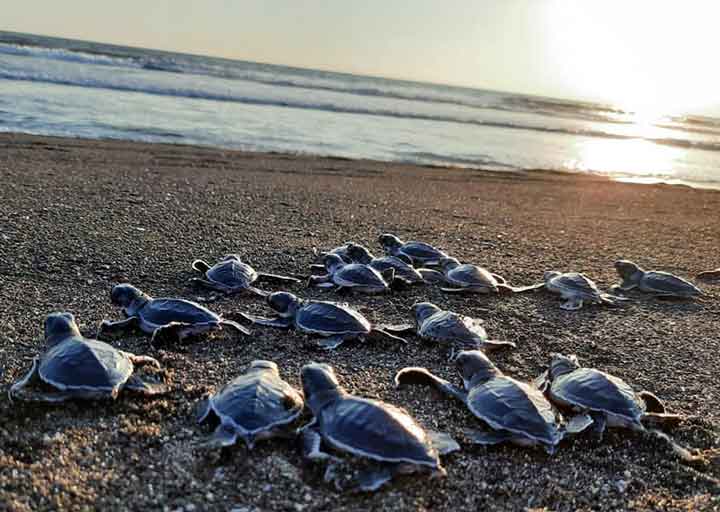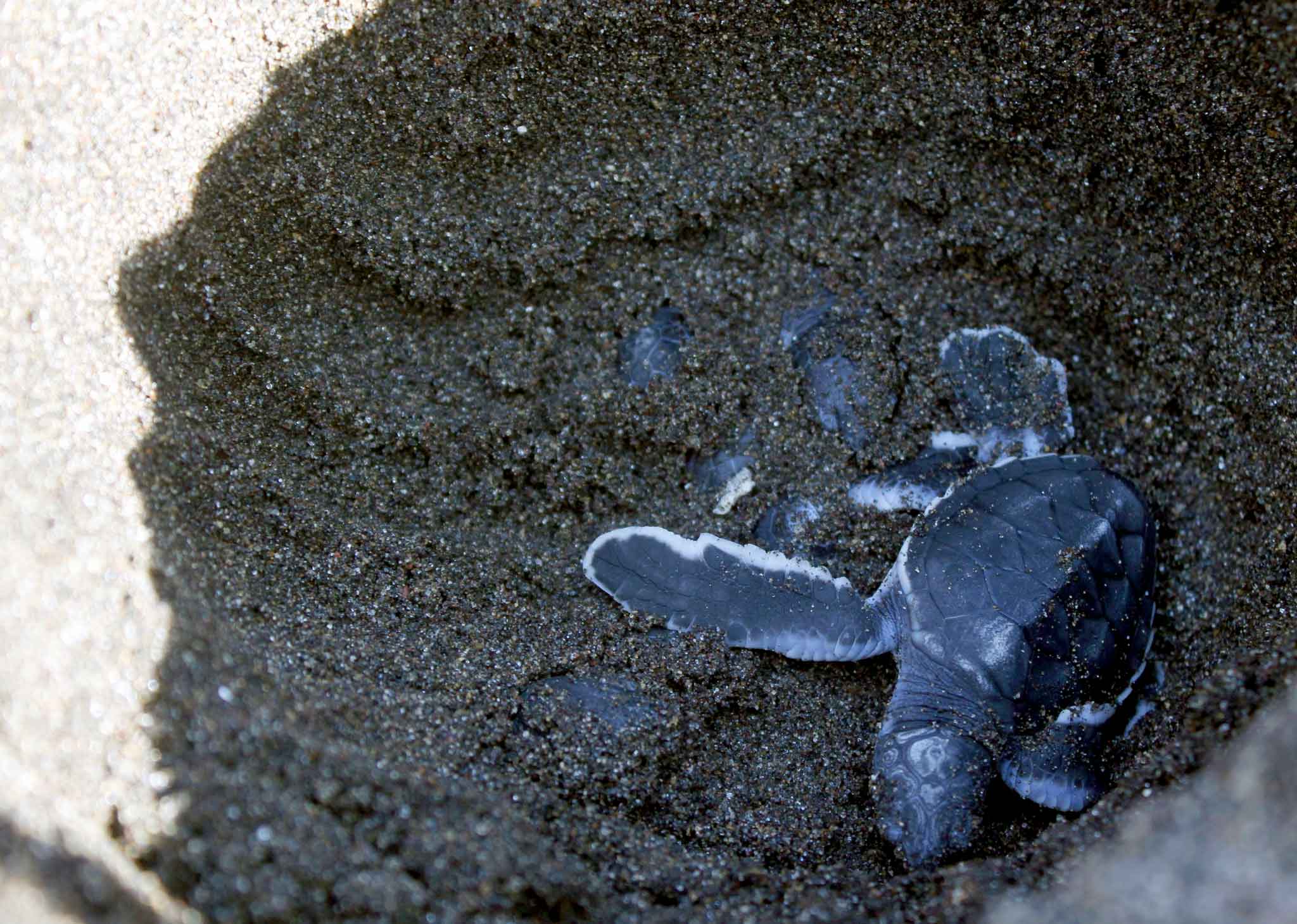Green turtle hatchlings released in the Pacific of Guatemala
The National Council of Protected Areas (CONAP) announced the release of 58 hatchlings of Green turtles (Chelonia mydas), also known as Black or Prieta del Pacifico, in the Tortugario de Tecojate de la Nueva Concepción, in the Pacific of Guatemala.
In a publication, the Guatemalan conservation body reported that “from the nest of 60 eggs, 58 hatched; the nesting frequency occurs 3 times a season with an interval of 12 days, and the remigration of 2 to 3 years or more, so these nests are not seen frequently ”.
Due to the rarity of its presence on Guatemalan beaches, this species does not fall within the 20% conservation quota, part of the National Strategy for the Management and Conservation of Sea Turtles, since it only applies to the parlama turtle (Lepidochelys olivacea), “so the complete brood must be delivered. This species is in the LEA index 3 of CONAP and appendix I of CITES ”.
The threats that turtles face have made them one of the wild species most at risk of disappearing. “Coastal and pelagic waters are used by sea turtles as migratory corridors and feeding grounds. The presence of these is of ecological importance in various ecosystems such as coral reefs, marine grasses and energy transport between the sea and the beach, since they are considered indicator species ”.

Green turtles are released in the Guatemalan Pacific. Photo: CONAP
The consumption of eggs, meat, skin and shells, their incidental capture in longline fisheries, gillnets and trawling and, mainly, the destruction of their habitat are the great threats they face.
There are, however, many programs and strategies worldwide to help its preservation. It is necessary, of course, to reduce the level of consumption that the current world carries out, since the production of solid waste, and the low level of water treatment in countries such as Central America, surpasses the capacity of nature to regenerate itself, which puts life in the oceans at risk.
In that sense, and as a good measure, in Guatemala there are 25 active turtles, according to Airam López, from CONAP, which are “conservation units.” They add that the turtles in the Central American country are not only hatcheries for the incubation of eggs, but are also community institutions in which “other conservation, educational, eco-tourism and community projects are developed.”
